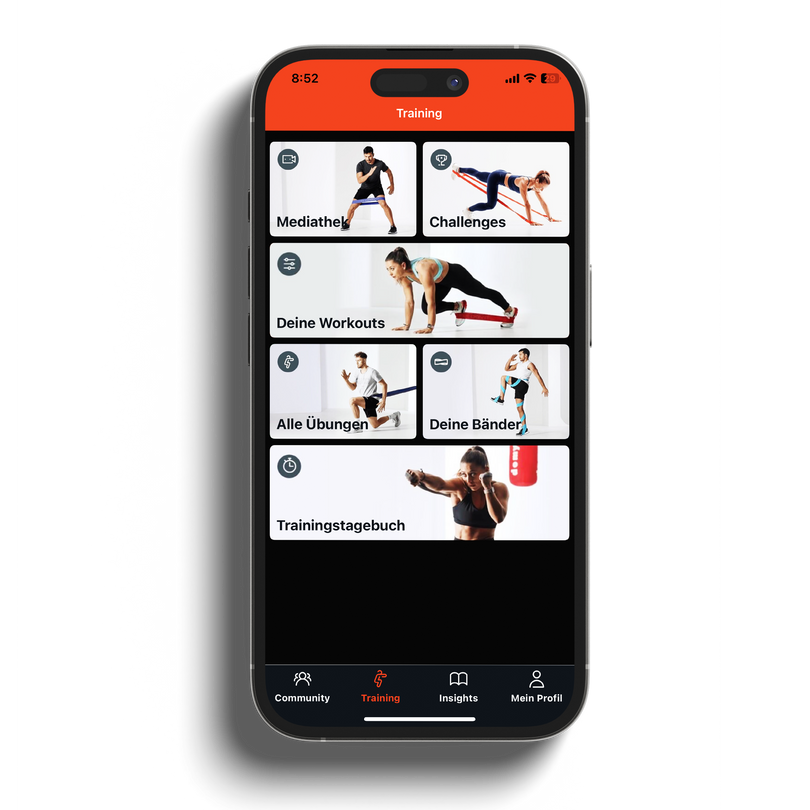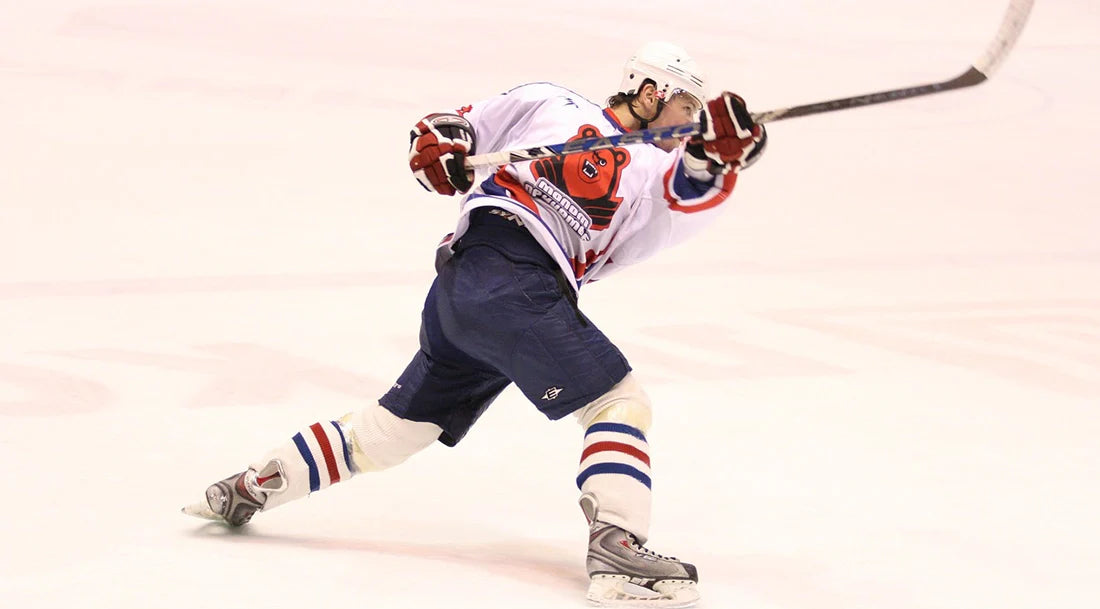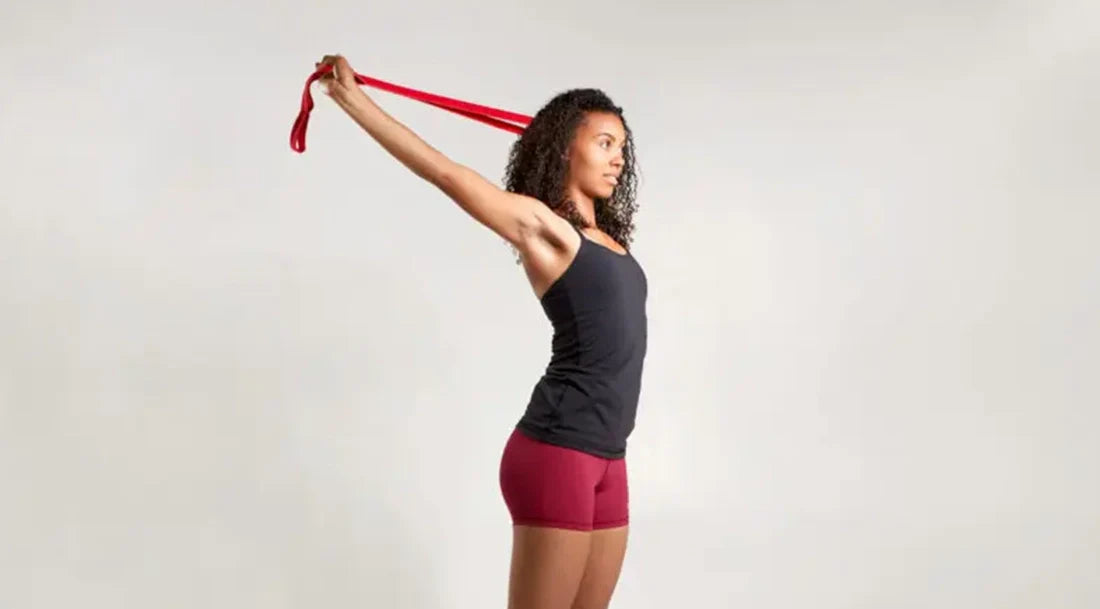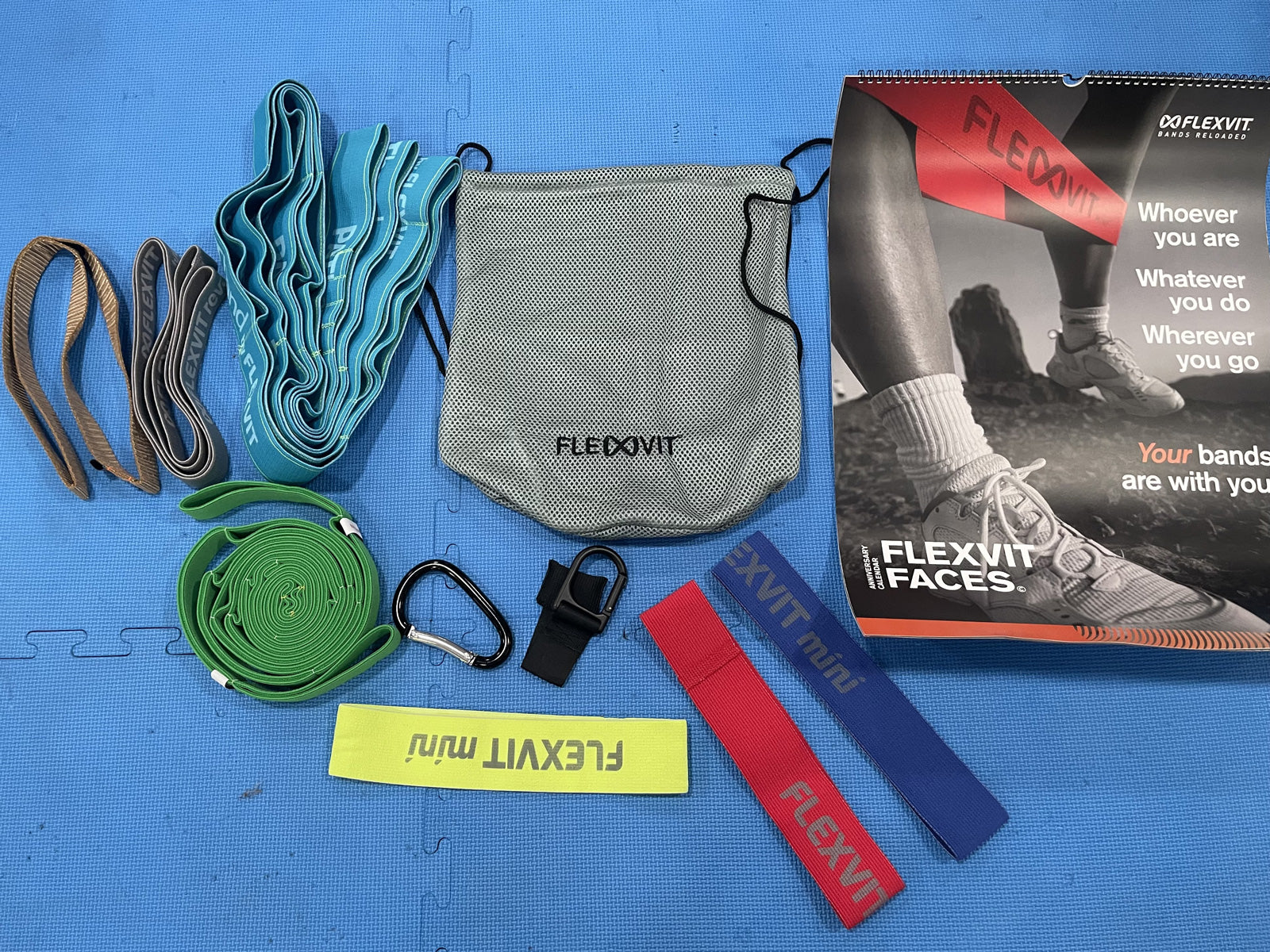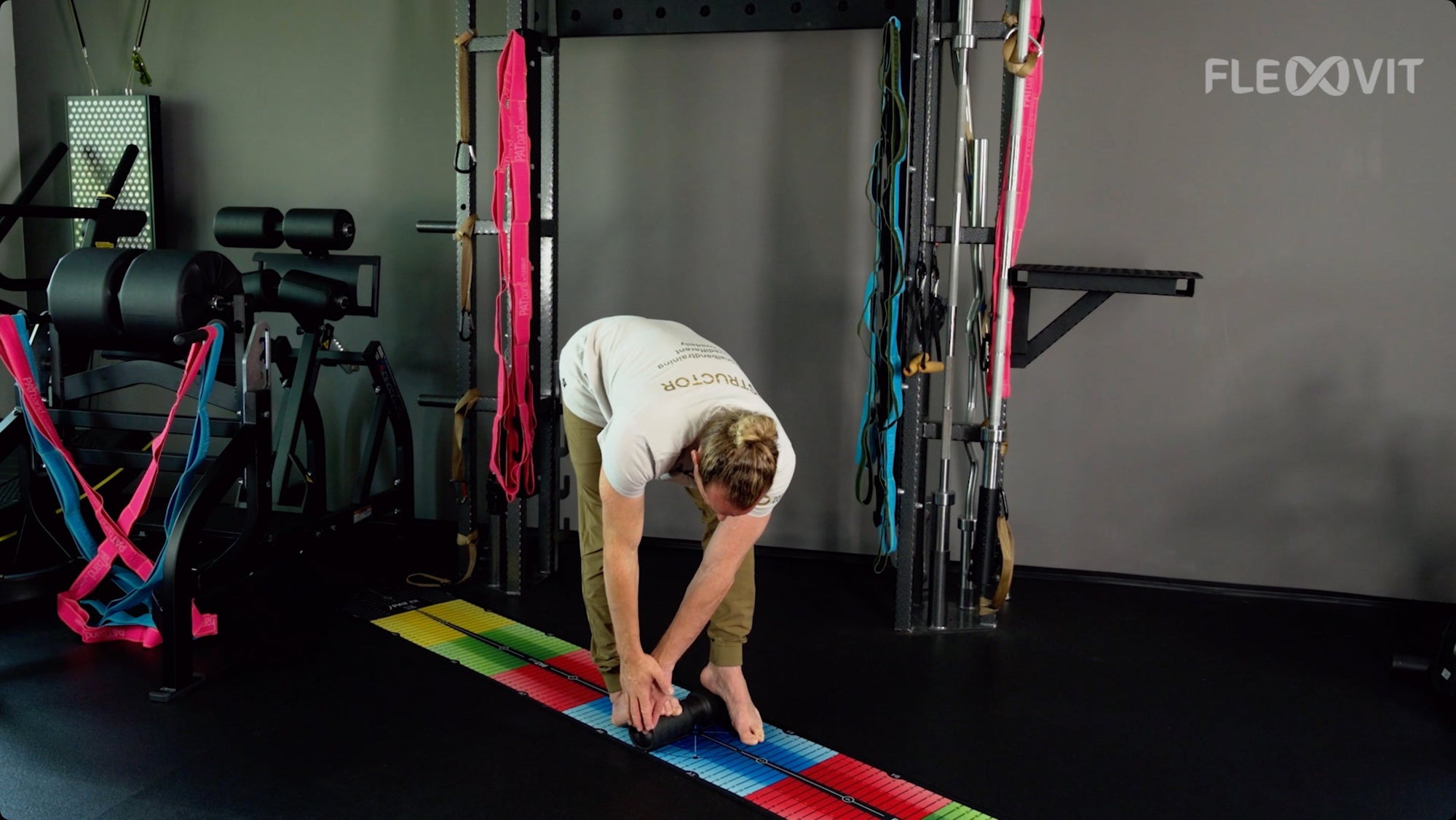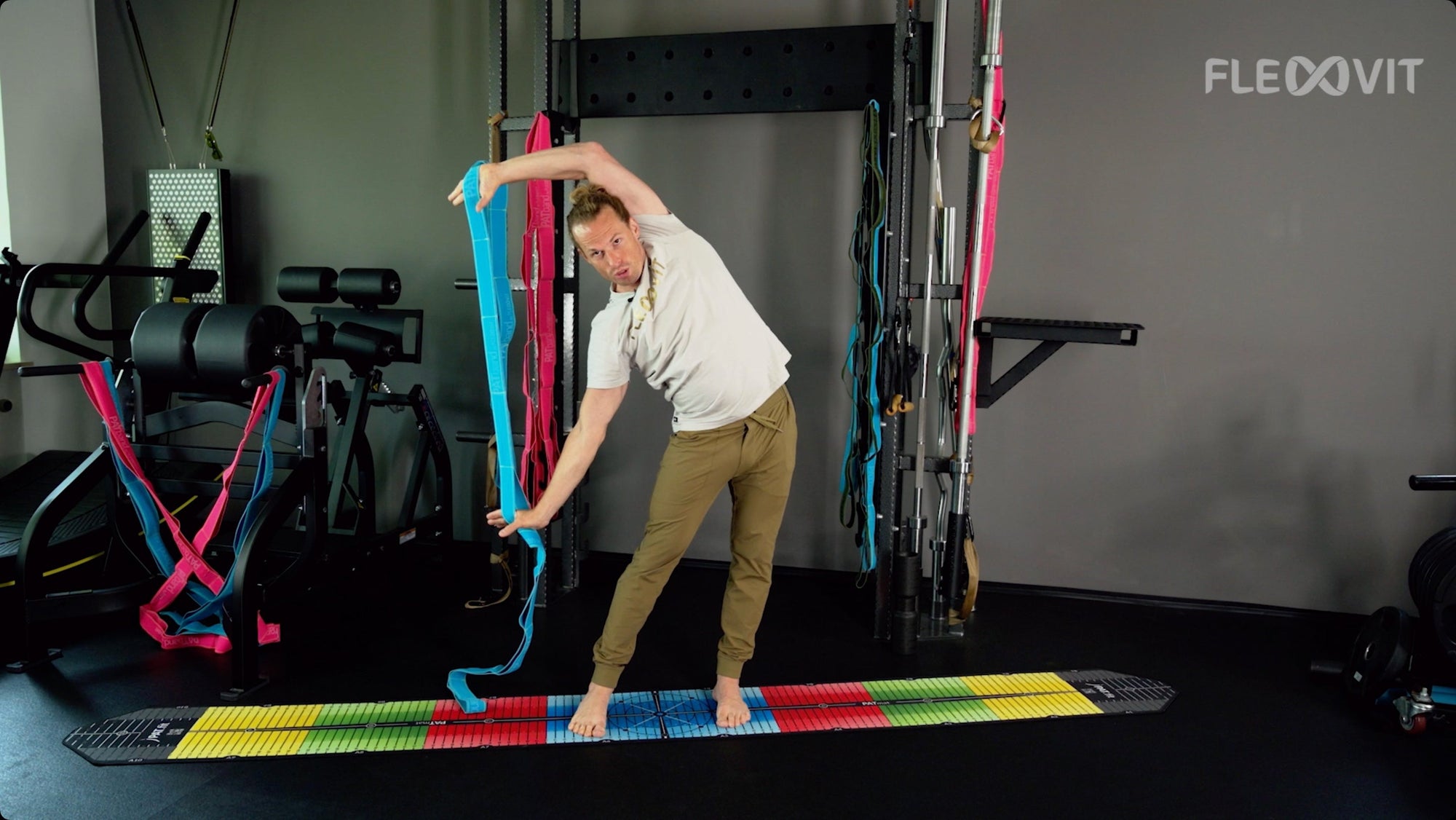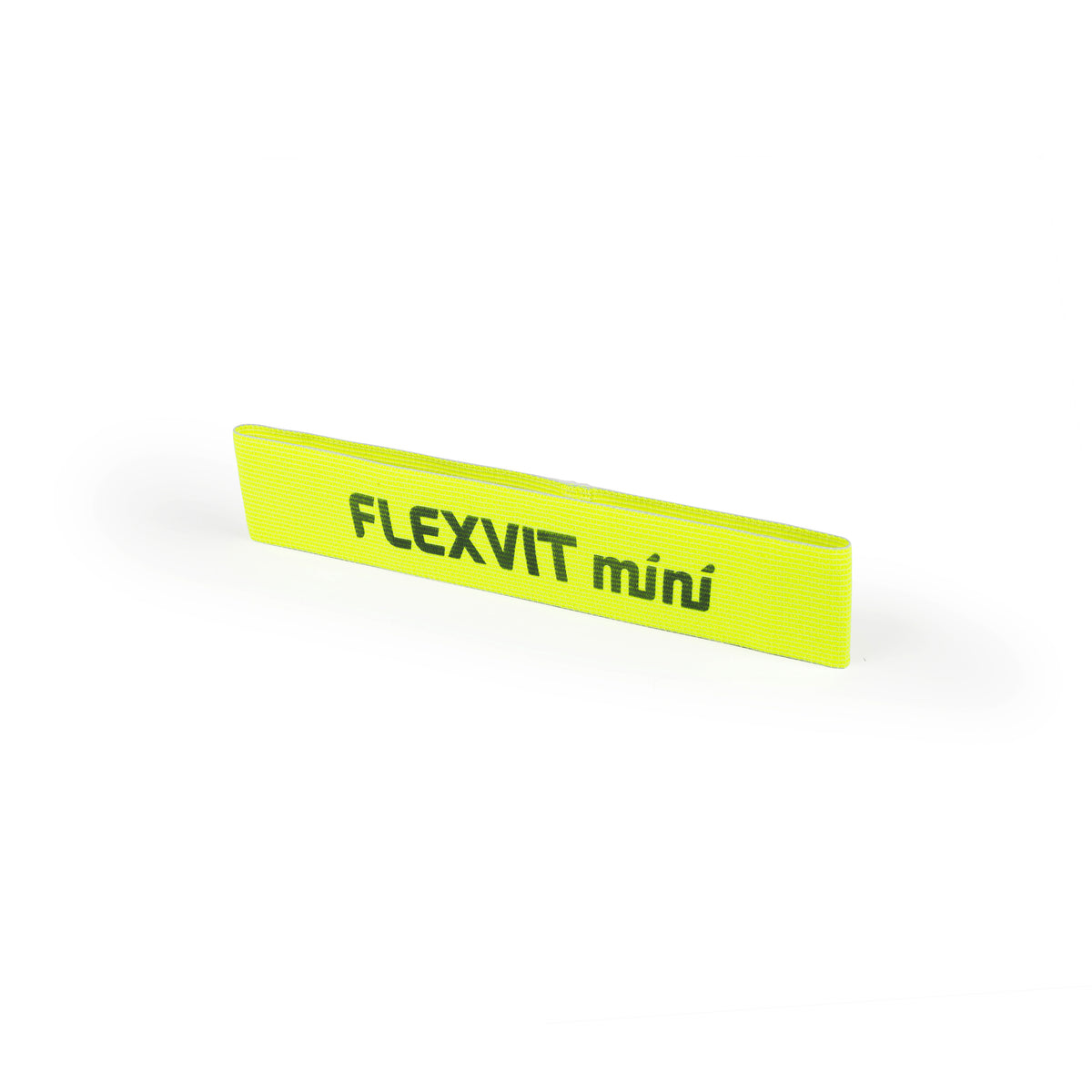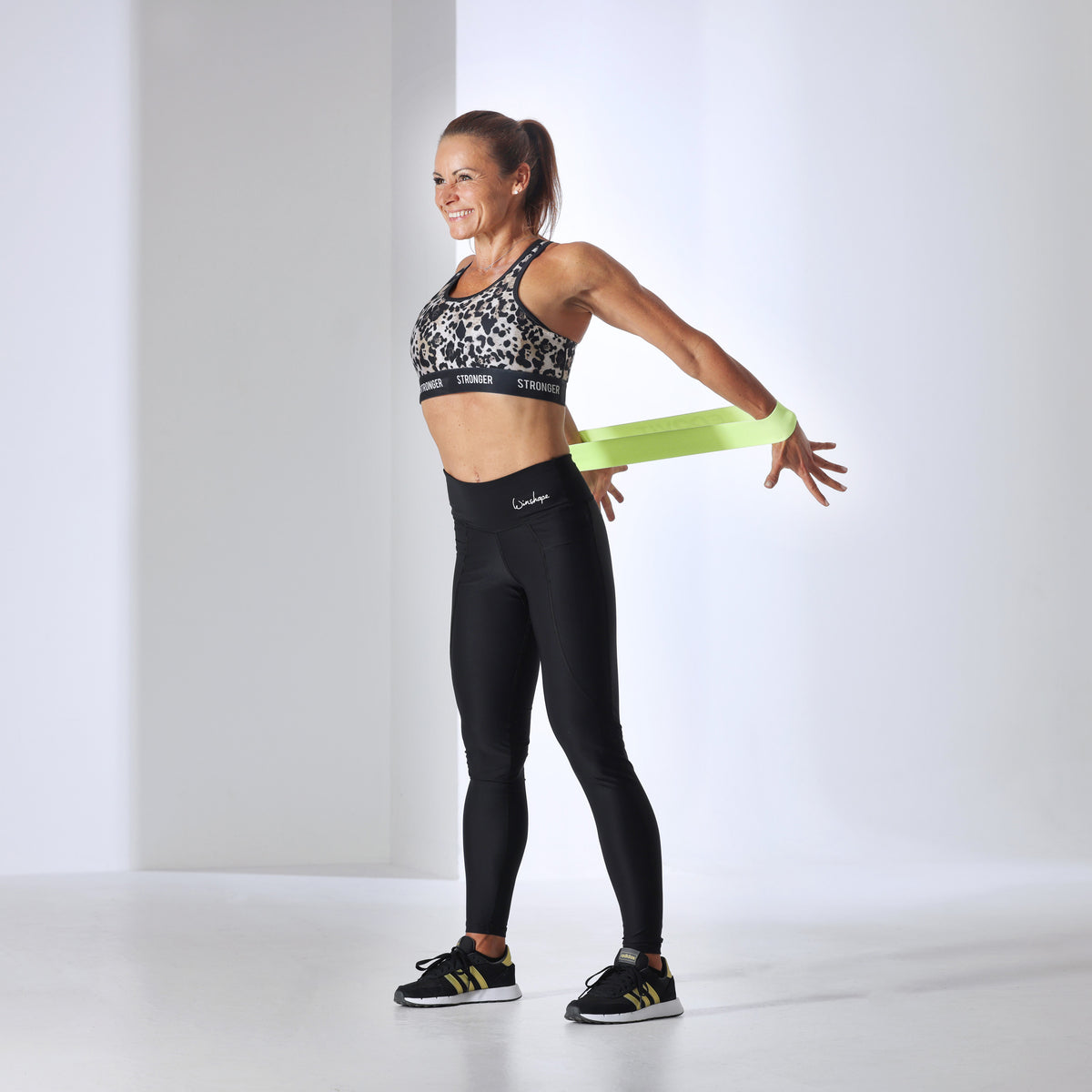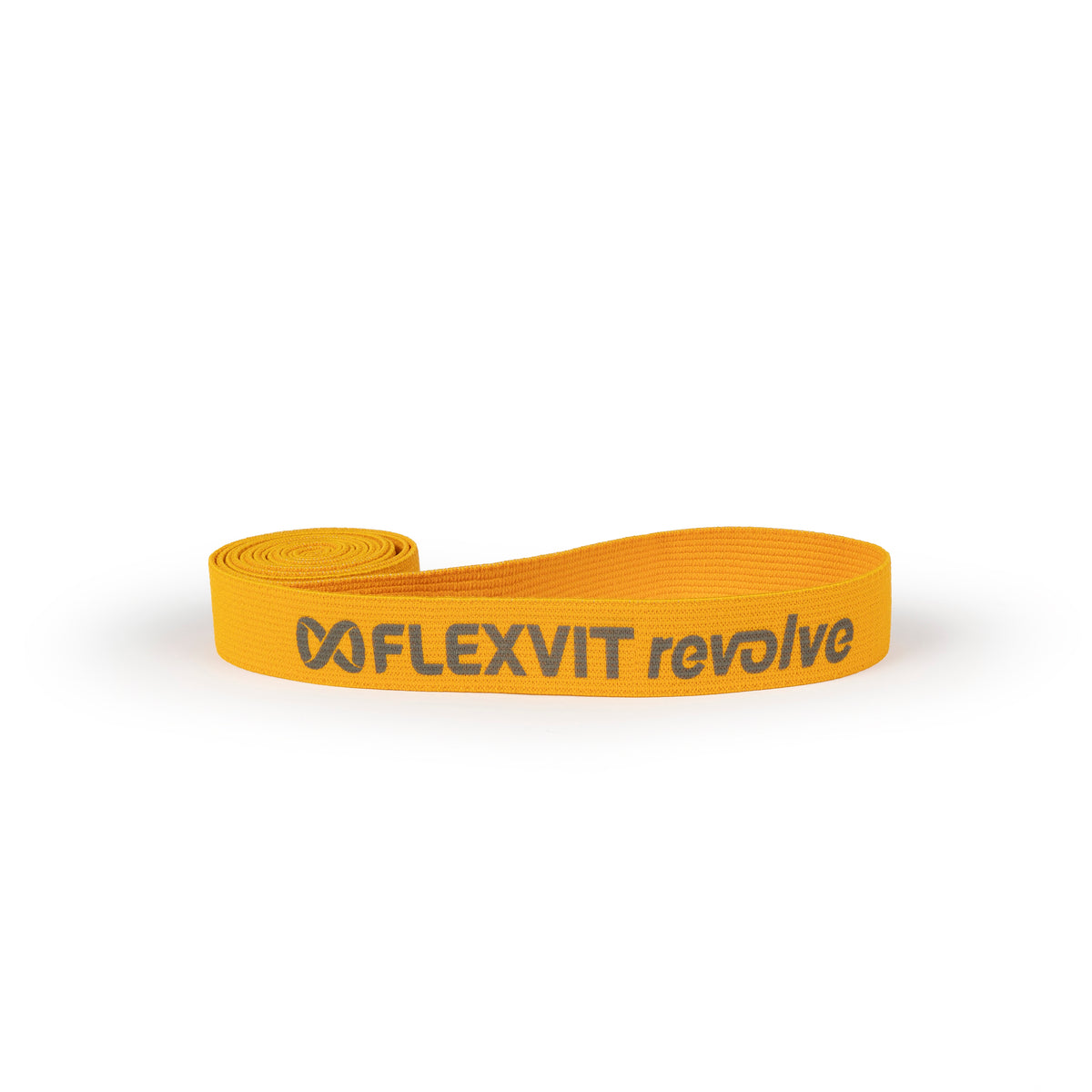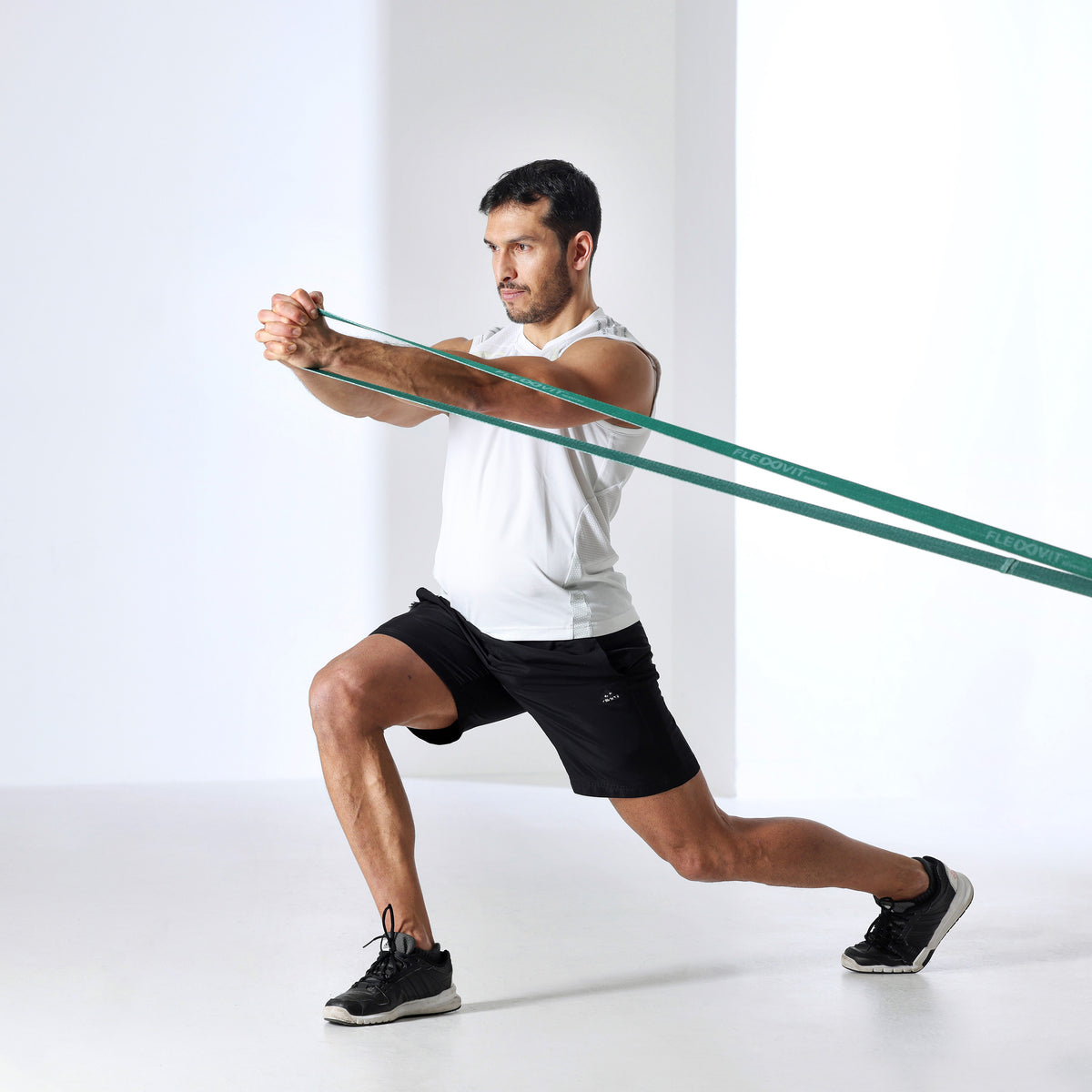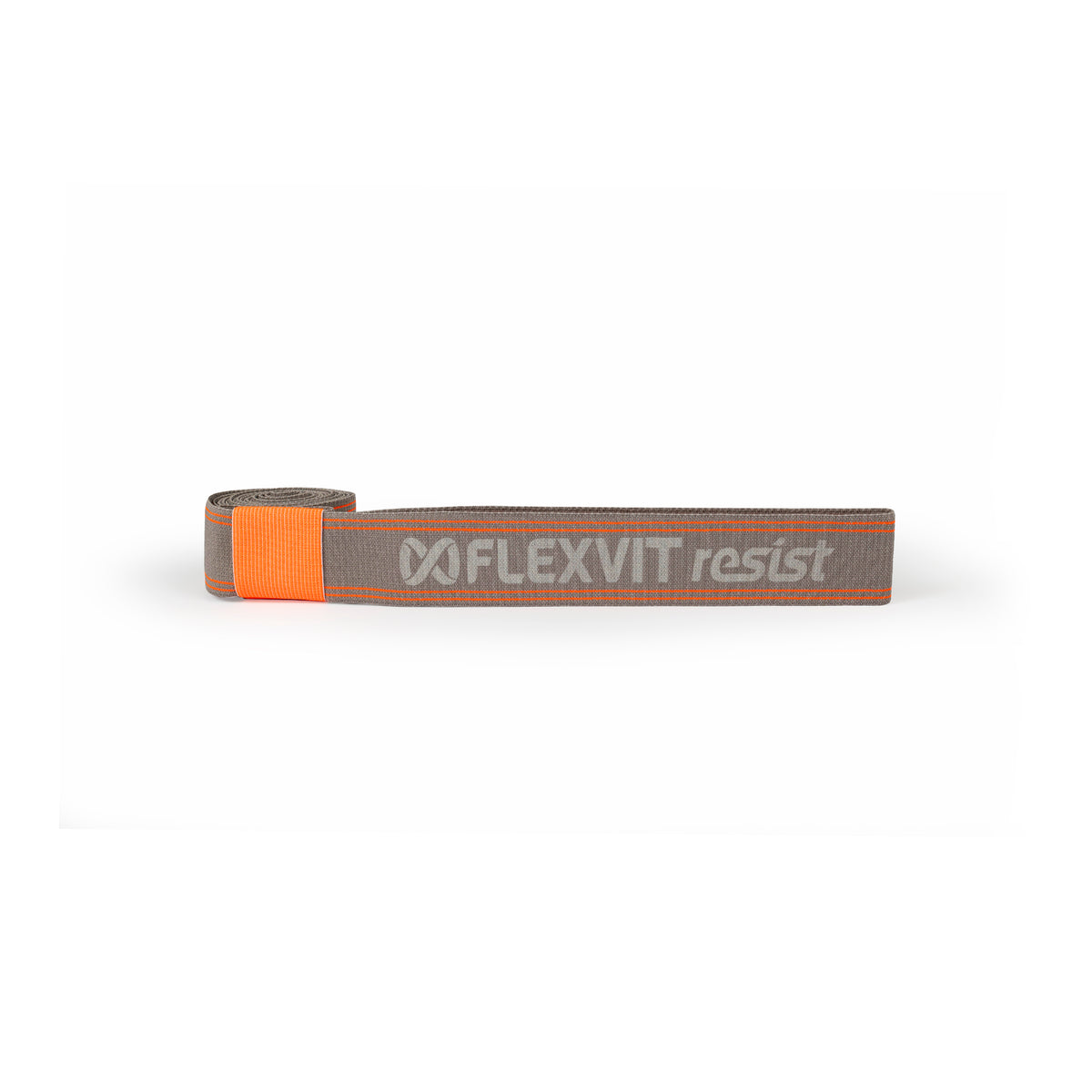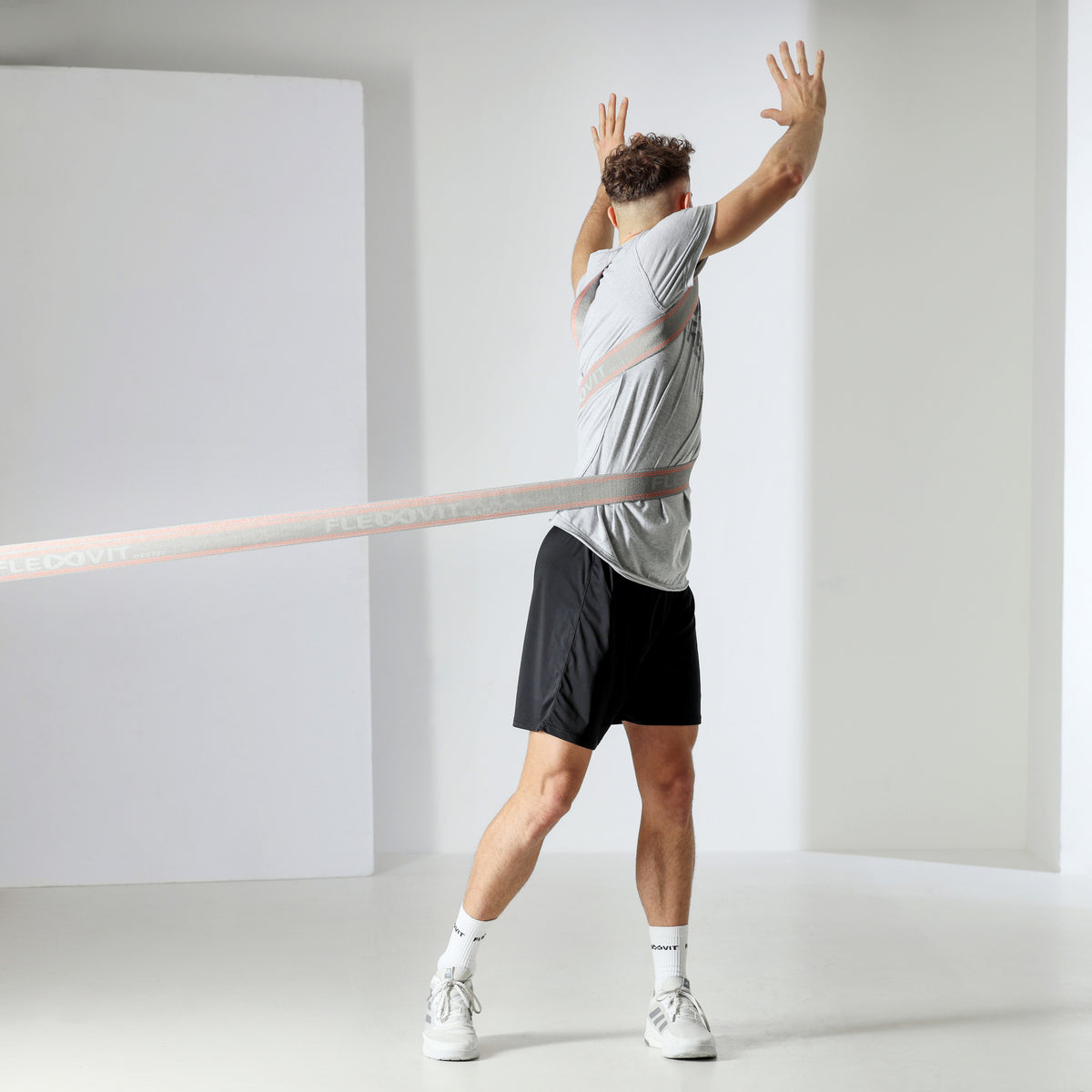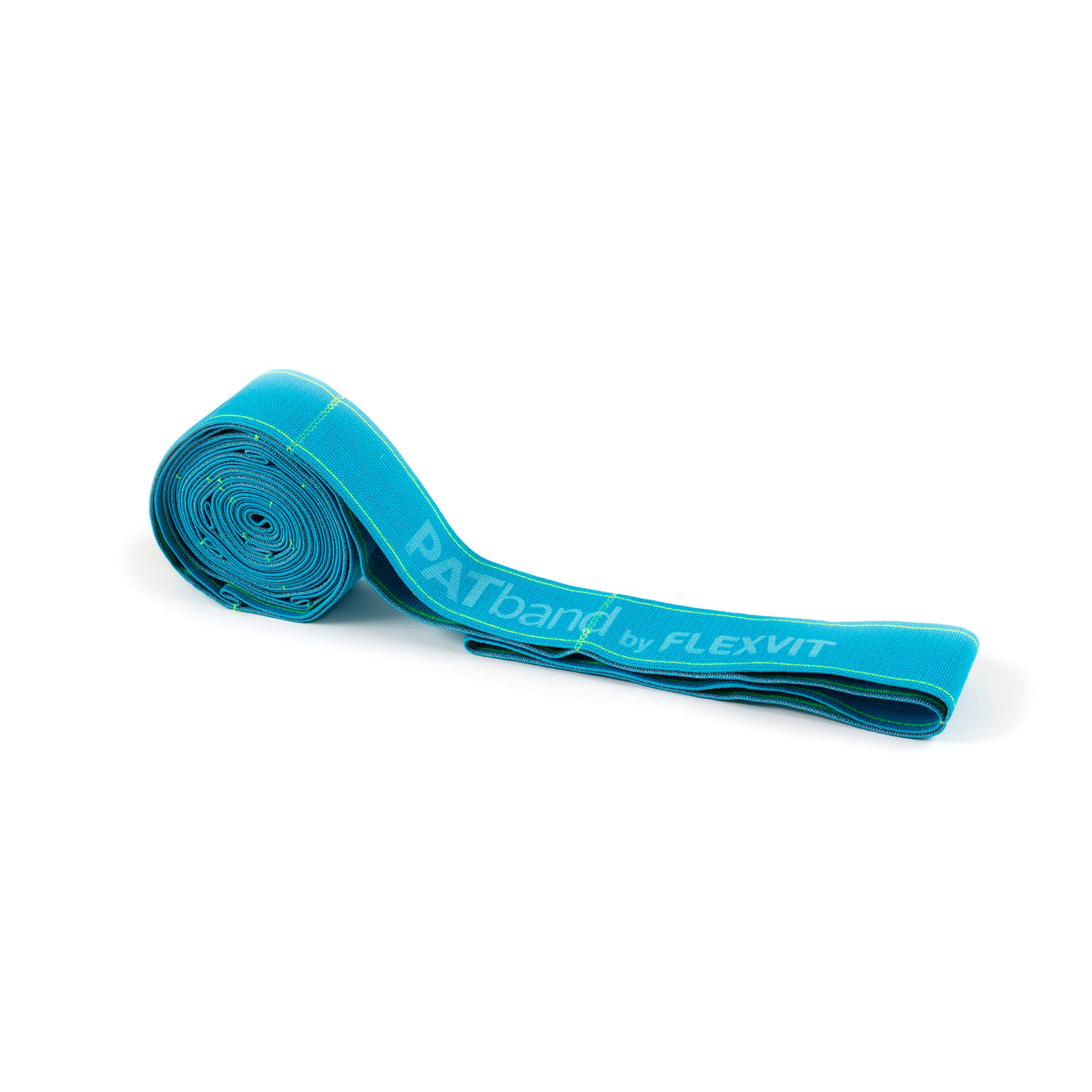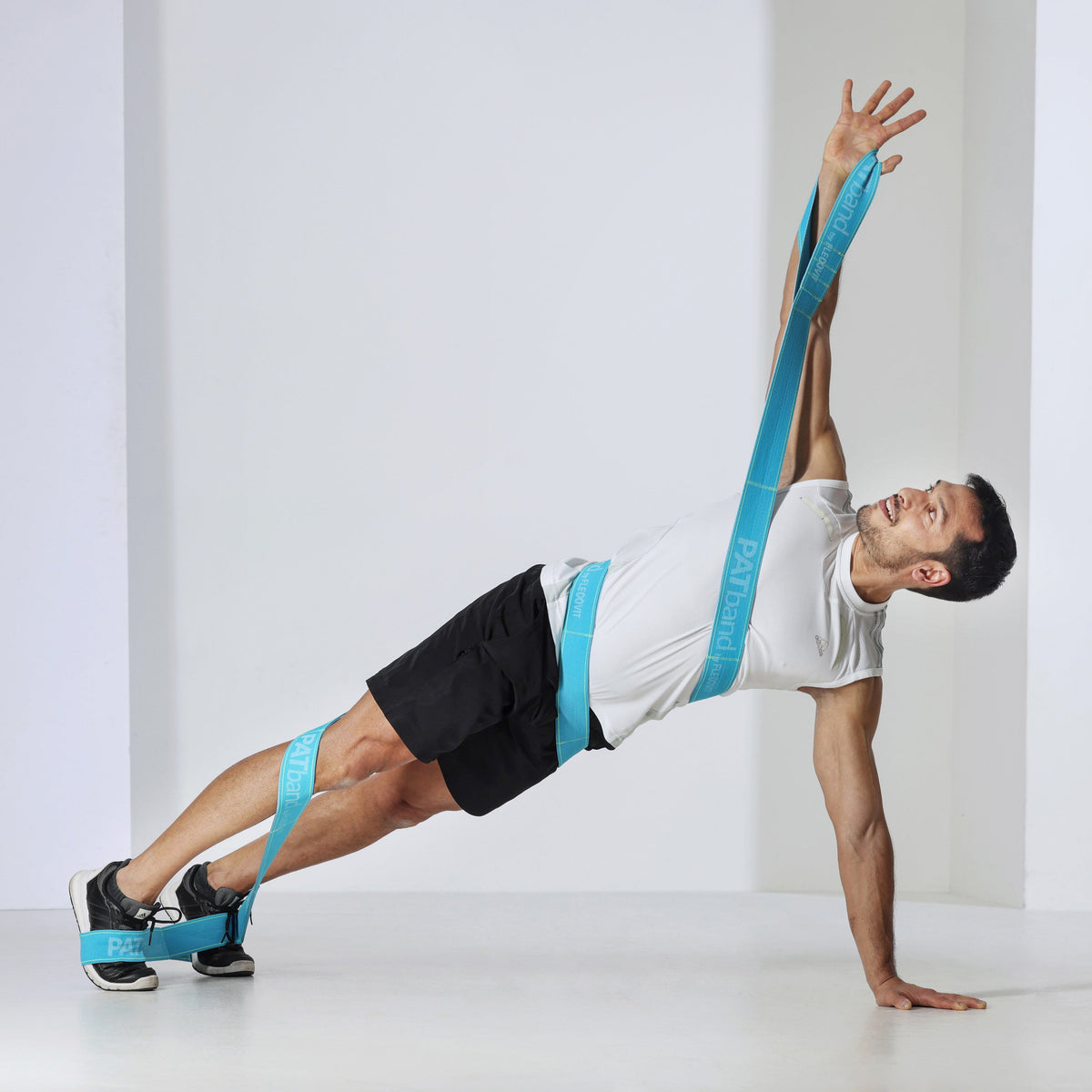We'll show you the best exercises for your ice hockey training at home with our resistance bands!
Ice hockey is a fast, unpredictable sport - which is what makes it so attractive for both players and spectators. A comprehensive set of skills in the areas of coordination, strength and endurance are used here and must be able to be accessed in a matter of seconds. This is exactly why exercises in several directions are so important when training ice hockey at home. Ice hockey players must be able to use speed and agility at all times, even when changing direction quickly.
Ice hockey training at home with resistance bands
Strength and endurance in the thighs and hips are the be-all and end-all in ice hockey. These muscle groups are responsible for the speed and agility of players. If you want to dominate in competition, you have to strengthen these parts of your body and train them away from the ice. For this reason, we show you practical exercises to prepare for your indoor ice hockey training.

The resistance bands from FLEXVIT are perfect for making ice hockey training at home easier for athletes. Because they are handy and light, they can be easily transported. For this reason, they can be used anywhere, in the gym, in your own home or even when training in the park. In addition, thanks to their different strengths, the resistance can be quickly adjusted depending on the exercise and the person exercising.
In addition to the legs and hips, it is of course also important to keep the upper body robust and fit in a physical sport like ice hockey. With the FLEXVIT bands you can train your entire body. There are also many exercises that train coordination and responsiveness in addition to strength, endurance and flexibility. In a sport like ice hockey, which is incredibly fast and varied, these skills can also represent the decisive advantage in the game. Ice hockey training should therefore always be varied and based on the stability of the entire body.
With our fitness bands you can train numerous ice hockey exercises at home - order now & get started!
1. Ice hockey training at home: agility and speed
Ice hockey players have to constantly and suddenly move in different directions during a game. The load and effort required are therefore permanently high and demanding. Therefore, the ability to move quickly and powerfully is extremely important and should play a corresponding role in ice hockey training at home. At the same time, balance is very important - especially during quick movements, curves, stops or when a player gets a body check, it is important to keep your balance and thus continue your path as quickly as possible. Ice hockey training at home should therefore include elements in which a position or alignment must be maintained while more difficult movements and exercises are carried out.
Hurdle hops with a one-legged stand
For the starting position, stand with your feet shoulder-width apart and place your FLEXVIT Mini just above your knees. Since this exercise is performed with one leg, you raise one leg for the starting position. Keep your core and core active and stable throughout the entire movement sequence. Now squat slightly, resulting in a slight squat
To become dynamic, jump up from the squat and land back in your starting position. Try to keep your balance without using your arms too much, but rather by relying on the stability of your legs and your core.

If you want more, combine this one-legged squat jump with a skate move. Imagine there is a small hurdle next to you. If you have an object you can side jump over, even better. Now combine the normal one-legged squat jump with a side jump. You can vary here whether you want to land with the same leg or alternate the supporting leg. It is important that you land here in a squat and only on one leg. Before you go back to the next side jump, complete a normal one-legged squat jump on this side either with the new leg or with the same leg. Then jump back in the other direction to your original position. This form of stability in your legs will be very useful later in your ice hockey training!
Sprints with resistance
Basic exercise sprint
For the basic exercise, fix the FLEXVIT Resist with the multi-anchor to an external point or a teammate - for a dynamic movement such as a sprint, we recommend doing this exercise with a team partner. Now you sprint from a standing position and try to develop forward strength against the resistance of the band and your training partner. You can also have a direction called out to you beforehand and also incorporate changes of direction during the sprint to make your training more sport-specific.
The right resistance is also extremely important here: If the effort is too great, as a sprinter you will have to stop at some point and miss your actual training effect. If the resistance is too low, you won't be able to really work on your starting strength or acceleration ability.

Stop & Go
If you stop the normal sprint every now and then and restart the acceleration, then we speak of 'Stop and Go'. Here, your training partner's thinking and reaction are also crucial: at every stop, they have to make sure that the band has a certain amount of tension. The resistance must be adapted to the respective phase of your stop & go training. This also makes it easy to incorporate changes in direction.
If you want to take your sprint training from home onto the ice, you can do that very easily. Simply take the FLEXVIT band with you to the ice rink and you can start on ice skates. How to combine ice hockey training with increased resistance.
2. Strengthen your upper body during ice hockey training at home
Lateral jumps and sprints are important for being fit and agile as an ice hockey player. But the upper extremities are also essential in this sport. Athletes used their upper body as much as their lower body in the game. That's why a trained upper body is an advantage, especially for ice hockey players. This is important because it helps develop the greatest speed and strength during ice hockey training and games. Players use the strength of their arms to gain even more speed on the ice with powerful swing movements. The arms are also used when players have to jump from one side to the other. In such situations, the arms actively participate and move in a supportive manner when sprinting or jumping sideways.
The focus of the following exercises is therefore on training the upper body muscles, which are needed for skating, shooting and duels. In addition to strengthening the upper body, many of the movements also include elements that require and train a sense of balance and the use of the lower extremities as well as the core.
Rowing with both arms
You can use a FLEXVIT Revolve for this exercise. Stand on the FLEXVIT Revolve with both feet. You should stand about shoulder-width apart. Then take the band in your hands with your arms stretched out in an overhand grip (palms facing you). Hold it directly in front of your body. The hands are also about shoulder-width apart. This is your starting position.

Let's get active: Now, using your shoulder and arm muscles, bend your elbows outwards and upwards to bring the FLEXVIT Revolve up to your chest. Try to avoid pulling your shoulders toward your ears. Even though the muscles are working here, your shoulders should remain relatively relaxed and not cramp. Your elbows should also not be raised higher than your shoulders. Hold here briefly and then extend your elbows and your arms down to return to the starting position.
Single arm diagonal row
For the diagonal row, you only place your one foot on the band. Now grab the band with the opposite hand. For your starting position, your arm is stretched out here too. To have functional resistance, you can grip the FLEXVIT Revolve a little shorter. Keep your core active and straight. Both shoulders point forward - pay particular attention that your shoulder does not move forward to the side with which you are about to perform the one-arm diagonal rowing movement.
From this starting position, pull your elbow up to shoulder height, very similar to normal rowing movements. The whole thing happens diagonally, from right to left or left to right, depending on which foot you stand on the band. Hold the resistance briefly at the top and then allow your arm to become longer again in a controlled manner and lower it diagonally.

3. Ice hockey training at home: strength, endurance and stability
With our FLEXVIT bands you can train the hip flexors, core and thighs through many different exercises. These muscle groups are key areas in ice hockey. If you strengthen and specifically activate these regions, you can create an enormous athletic advantage over your opponent. As a player, by training these areas you not only gain strength, but also speed. With the right training preparation for your ice hockey training, you can give yourself a decisive advantage over your competitors!
Speed in particular is trained when you train for time with less resistance but many repetitions. The combination of power and speed is an unmistakable reaction power and speed. And that's exactly what ice hockey players develop when they incorporate resistance bands into their ice hockey training at home.
There are countless speed and agility exercises that can be trained individually or easily combined in circuit training. With the bands, training becomes varied, demanding and effective - even without ice skates and an ice rink.
Glute bridge
For this exercise you start in the most stretched bridge position possible. Your legs are shoulder-width apart, your buttocks lifted as high as you can. You can place your arms flat on the floor on either side. They help you maintain stability during the exercise. The FLEXVIT Mini is located just above your knees. Feel free to try out the resistance here and find the band that challenges you best without overwhelming yourself. In the basic variation, you now raise and lower your hips in a controlled manner. Focus particularly on your glutes, hamstrings and lower back.

Tip: The further your feet are away from your hips, i.e. the larger the angle between your bottom and feet, the more your rear thigh is activated. If your feet are closer to your bottom, these muscles are more likely to be targeted.
Single-leg glute bridge
First, lie flat on the floor with the FLEXVIT Mini wrapped around your thighs. Now pull only one leg up and extend your other leg. Your arms lie at the sides of your body. Push your hips up over your heels until your thighs and torso form a line. Once your hips are up, slowly lower them again, but not so far that they touch the floor. The thigh of your extended leg remains parallel to your other leg.
Hip bridge with resistance
Lie on your back with your legs bent and place the FLEXVIT Revolve around your hips. Look up and fix the band with your hands. Depending on where you grip the band, there is more or less tension and therefore resistance on the band.
Then extend your hips explosively upwards, keeping your feet firmly on the ground. The hip is then lowered again and this process is repeated several times. Pay particular attention to full hip extension and that your feet are completely on the floor.
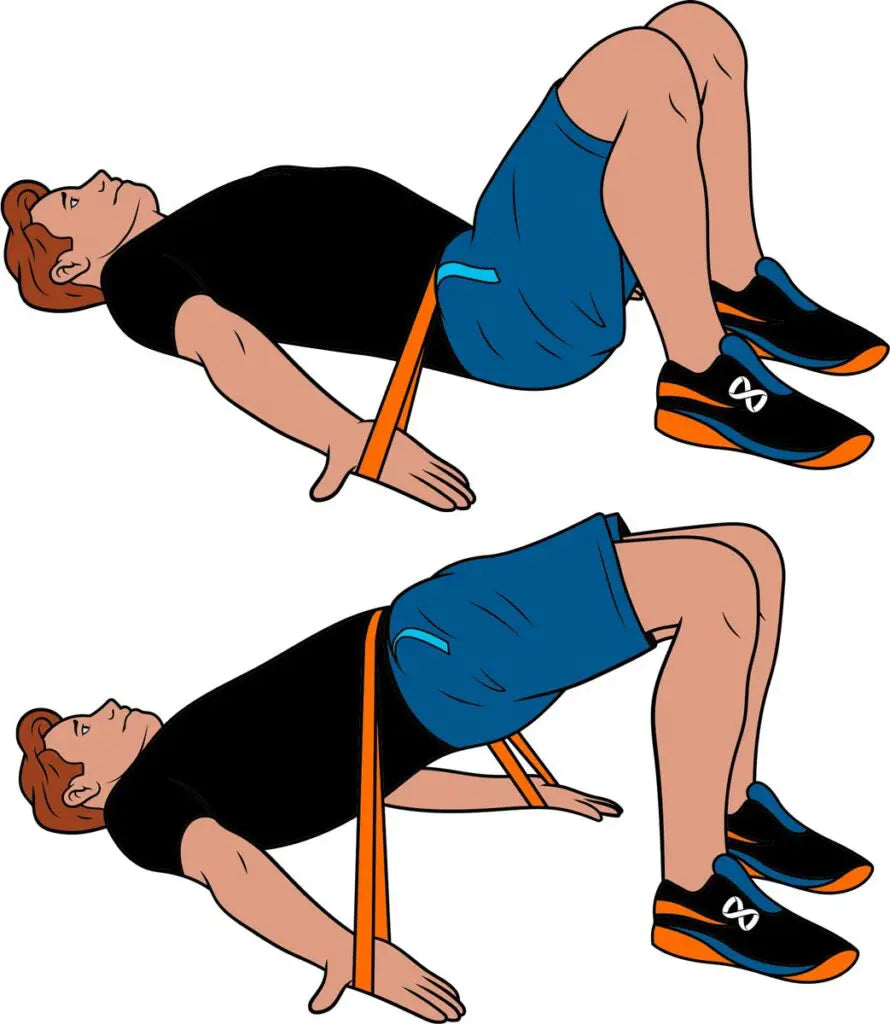
Download the app now and discover over 400 training exercises! Train wherever & whenever you want – with the app for your functional band training from FLEXVIT!

